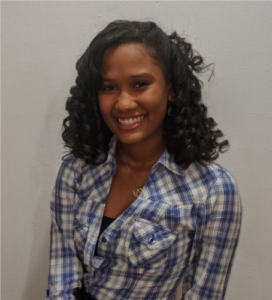
As an immigrant, what has the college process been like for you?
I came here in the eighth grade, and then went to Flushing International the next year. I didn’t do a lot of research on schools or even think about college that much—it was just about learning the language and understanding what was going on. Because of the language barrier, I was scared to apply to SUNY or private schools. I did limit myself in that way.
Now I’m at John Jay and about to graduate with a major in forensic psychology. My short-term goal is to be a mental health counselor, and my long-term goal is to be a clinical psychologist. I want to work with adolescents.
What’s been different about your coaching experience than your peers working at traditional high schools?
Since our students are so new and still learning the language, they don’t always know the terms that colleges use. So I’m always trying to bring in vocabulary and definitions when I do workshops in classrooms. And there’s also a lot of teaching about the whole college experience in the United States—how you have to apply, and get accepted, and then pay for it. And it’s also about careers. I have a student who wants to be a doctor. In her country, that’s five years of school. When I explained about undergrad, and then a test, and then applying to med school, and then a residency, she started to see how different it is here. Our youth leaders (from Right to College) also do a great job teaching about the different types of schools starting in 11th grade.
In general, what strengths do you see your students bringing to the process?
They can really handle a lot of setbacks. They came here, they maybe had a rough time learning the language, they’re adjusting to the whole new systems and cultures—they’ve been through a lot already. They’re resilient, and not afraid of challenges. There are students who we can suggest things to and they just say sure, okay, let me try. There’s a lot of commitment.
Are there any challenges in working at an international school?
I have a lot of undocumented students. So they’re dealing with being first-generation and low-income, but also their citizenship and the fears of identifying their status. Now there’s the DREAM Act, so they can get TAP money, but there’s still not the same amount of money for them as for other students. And I can’t just go into a classroom and say, let’s fill out FAFSA together. Half the class might not even be able to apply, and that’s going to bring up a lot of emotions. It has to start with a one-on-one conversation about students and what college means for them, and then figuring out how to go through the process.
What do you enjoy about working at an International high school?
I can really relate to what they’re going through. I went through the same thing when I came here. I want the students to see me as someone they can look up to—I was a recent immigrant who knew nothing about the system, but I got into a college. It doesn’t even really matter which college, but just that I could do it. And since we’re close in age, I think it’s easier for them to approach me and share their concerns and fears than it might be with someone who’s a lot older. The work I’m doing is making a difference. I get to see outcomes, and it’s so rewarding. I even have students who graduate from high school and still come back to ask me questions or thank me for the help. Being here at Flushing has helped me be more successful in my own life, because I see how much what I’m doing matters.